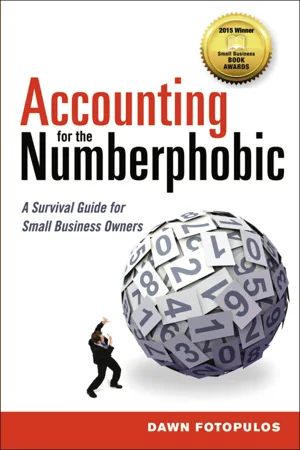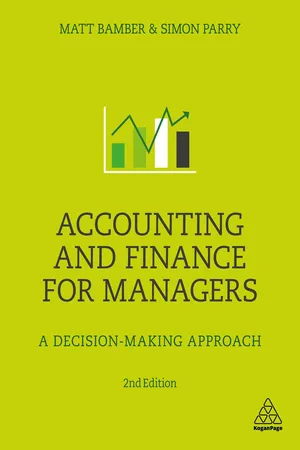Business
Cash Flow Improvement
Cash flow improvement refers to the process of increasing the amount of cash coming into a business or reducing the amount of cash going out. This can be achieved through various strategies such as optimizing accounts receivable, managing inventory levels, negotiating better payment terms with suppliers, and increasing sales. Improving cash flow is essential for maintaining financial stability and supporting business growth.
Written by Perlego with AI-assistance
Related key terms
Related key terms
1 of 4
Related key terms
1 of 3
5 Key excerpts on "Cash Flow Improvement"
- eBook - ePub
Accounting for the Numberphobic
A Survival Guide for Small Business Owners
- Dawn Fotopulos(Author)
- 2014(Publication Date)
- AMACOM(Publisher)
CHAPTER 6 Managing Your Cash Flow More Is Better So now you know how to read your Cash Flow Statement and use it to build a cash flow budget. Hopefully you’re convinced that conserving cash is vital to keeping your business alive, and that you need to closely manage the outflow of cash so every expense is serving to keep the business running rather than draining it of precious lifeblood. The heart of cash flow management is the cash cycle. In most businesses, the cash cycle is based on terms of payment (which indicate the date full payment is due as well as under what conditions discounts can be taken) rather than a simple cash sale, and looks like this: 1. A sale is made. 2. The goods are shipped or the services are rendered. 3. As soon as the business has delivered, an invoice goes out with payment terms clearly stated. 4. Once the invoice is paid, the cash is deposited in the business’s account. 5. Operating expenses can now be paid. In a perfect world, this cycle works seamlessly. In the real world, problems can arise at every step. Thus, every step must be managed. A lot of people who run small businesses mistakenly think that the only way to improve cash flow is to influence Step #1 in this cycle: selling more. But as you saw in the last chapter, booking more sales revenue on your Net Income Statement does not automatically put more cash in your bank account. There are a myriad of factors that influence how, when, and if that revenue converts to cash, and all of those factors come into play after Step #1. Credit extension, invoicing policy, payable policy, dealing with customers, and negotiating with suppliers, banks, and internal staff are all management disciplines that have a direct impact on the cash cycle. If these are handled well, a business can achieve optimal cash flow from existing operations. Sustainable cash flow from operations reduces pressure to increase sales or borrow cash from outside sources - eBook - ePub
Accounting and Finance for Managers
A Decision-Making Approach
- Matt Bamber, Simon Parry(Authors)
- 2017(Publication Date)
- Kogan Page(Publisher)
07Cash and working capital management
OBJECTIVE To provide an understanding of the importance of cash management to a business and the impact of working capital management strategies on cash flow and liquidity.Passage contains an image
LEARNING OUTCOMES After studying this chapter, the reader will be able to:- Discuss the importance of cash management to a business.
- Interpret a cash budget and identify potential problems.
- Formulate strategies for improving cash flow and liquidity.
Passage contains an image
KEY TOPICS COVERED- The cash-flow cycle.
- Information which a cash budget provides, and why this is important.
- The format and construction of a cash-flow forecast.
- The evaluation of different decisions which impact on cash requirements (financing of asset purchases, credit terms to customers).
- Strategies for improving cash flow.
Passage contains an image
MANAGEMENT ISSUESManagers need the ability to evaluate the impact of managerial decisions and strategies on cash requirements. They also need to be able to analyse cash budgets and use them to make appropriate managerial decisions.Introduction
Planning and managing cash flows lies at the centre of business success. We hear many aphorisms which confirm how important this is: ‘cash is king’ and ‘cash is the lifeblood of the business’ are two commonly used expressions. Why is this the case? Quite simply, a business cannot survive without cash. It is possible for a business to function for several years without making a profit provided that it still has cash. But once the cash runs out the business will very quickly fail. This was the fate of many so-called ‘dot-com’ businesses in the 1990s.Passage contains an image
Extract 7.1: Cash flow and small business failure Dun and Bradstreet, one of the world’s leading credit rating agencies, report that 90 per cent of small business failures are caused by poor cash flow.Why does a business need cash?
Cash is needed in a business for a number of reasons: to purchase inventory and to pay wages, rent, utility bills etc. A business also needs cash to purchase assets such as machinery, equipment, vehicles and premises. In addition, cash is needed to pay dividends to investors, pay interest on loans and pay any taxes due. On top of this, at any one time a business may have cash tied up in current assets such as inventory and accounts receivable. This will be a normal part of operating the business, but the more money that is tied up in assets the greater the cash requirement for the business. For example, if a business offers credit to its customers, this will delay the receipt of cash from sales and will in turn increase the amount of cash the business needs because it still needs to pay wages and other bills. In a similar fashion, if a business increases its levels of inventory it will also increase its need for cash. - eBook - ePub
- John B. Vinturella, Suzanne M. Erickson(Authors)
- 2013(Publication Date)
- Elsevier(Publisher)
It is wise to think of all current assets as nonearning assets. A company should constantly monitor its level of cash and ensure that it is put to its best use. Even though a company may use a sweep account to keep the cash-earning interest, the interest earned is trivial compared to what the money could be earning if it were put to productive use in the firm’s fixed assets. Large stockpiles of cash are a red flag in attracting takeover suitors. More to the point, the owner’s wealth is not being maximized unless money is put to its most productive use, and that use is virtually never in current assets.Summary
This chapter explores the opportunities for finding capital through the internal management of cash flows. Cash flow management, distinct from the accounting function, is a financial function necessary for planning and for reducing the need for external sources of financing.Working capital management, the control of current assets and current liabilities, is more important for small firms than for large ones. This is due to the fact that small and new firms have relatively more capital invested in current assets and have less access to capital than their larger counterparts.The CCC is the basic tool of working capital management. It allows the firm to monitor and control the cash invested in accounts receivable and inventory and to maximize the use of free, or reasonably priced, credit from suppliers. Trade credit can be free or very expensive. It is critical to determine its cost and use it optimally. Ideally, the firm’s total investment in accounts receivable and inventory will be financed by free trade credit from its suppliers.An example was used to demonstrate the creation of the cash budget. The cash budget allows the firm to spot external financing needs and to arrange for them in advance. Additionally, the cash budget allows the firm to manage cash flows to reduce the firm’s need for external financing. Firms must produce both monthly and daily cash budgets to adequately control and plan for cash shortfalls.The relationship between rapid growth and negative cash flow was discussed. One solution to this problem is obviously to grow more slowly. Although this is the antithesis of what may seem obvious, it may be the most prudent way for most firms to proceed. - eBook - ePub
- Michael W. Fountain, Thomas W. Zimmerer(Authors)
- 2018(Publication Date)
- SAGE Publications, Inc(Publisher)
Creditors, lenders, and employees cannot be paid in profits, only in cash. Cash is the money that flows through business in a continuous cycle without being tied up in any other asset. A business that is showing a profit on its income statement can still fail if it does not have cash to meet its financial obligations. Decreases in cash occur when the business makes purchases of inventories, parts, or materials for production. As discussed previously, cash outflow is high for new business ventures at the beginning of the cash flow cycle: there will be purchases for inventory and payroll and production expenses, and these will always lead the cash inflow that comes from collecting receivables. The reality is that, on many occasions, a business grows at a rapid pace, and it expends all of its cash—paying employees, managers, suppliers, and creditors—until cash is completely expended and the business is no longer able to meet its financial obligations. Banks, the normal source for loans, are reluctant to provide additional financing in this circumstance because their managers will see the entrepreneur as incompetent for allowing this cash crisis to occur. Without additional cash, the firm cannot meet obligations to creditors. When this occurs, creditors can file an action with the courts to force the business into bankruptcy in an attempt to recover some of the money owed to them. The bottom line is always the same: Cash is king.Cash Flow Process
Chapter 5 - eBook - ePub
- Rajiv Rajendra(Author)
- 2013(Publication Date)
- Wiley(Publisher)
Pressure on the Treasurer to find in-house solutions for funding increases as more and more cheaper sources of liquidity dry up. There is an increasing view that many of the reasons for cash flow inefficiencies are internal, but companies sometimes tend to look at outside sources first before looking internally. Many performance measures and metrics of business and procurement units have targets and incentives based on the top or bottom line, while focus on cash flow tends to be the baby of the Treasurer and chief financial officer (CFO).This chapter focuses on these points, and how the modern company is managing to work on them to address larger issues and find concerted solutions.WORKING CAPITAL IN THE OPERATING CYCLE
The Treasurer with support from the CFO works on reducing costs through process efficiency (centralisation, dematerialisation, consolidation, and in-house banking) while adding value through balance sheet efforts (supply chain finance and working on ratios) and process automation (straight-through processing to increase control and efficiency and reduce headcount).The operating cycle (Figure 11.1 ) is the chain that starts with cash and moves on to procuring raw materials, manufacturing and storing the inventory, selling the finished product, and finally recognising cash from the customer to whom the end-product has been sold. The funding of the entire process or operations on a day-to-day basis, in a nutshell, is the working capital of the firm.FIGURE 11.1 Operating CycleFrom a balance sheet point of view, working capital is used for the short term (see Figure 11.2 ).FIGURE 11.2 Working Capital in the Context of Balance Sheet and Return on Invested CapitalWorking capital, which is one of the main components of capital utilised by the firm, determines the denominator of the return on invested capital, a key ratio for shareholders and debtors to assess the firm’s performance. Other aspects driven by operations, such as profitability, determine the numerator.
Index pages curate the most relevant extracts from our library of academic textbooks. They’ve been created using an in-house natural language model (NLM), each adding context and meaning to key research topics.
Explore more topic indexes
Explore more topic indexes
1 of 6
Explore more topic indexes
1 of 4




